If reports are to be believed, Washington is about to send some of the famous Tomahawk cruise missiles to Ukraine. Looking at a map published by the Washington-based think-tank, the Institute for the Study of War (ISW), it is easy to see why the war-torn nation would be happy to have the support.
The ISW-produced map shows how the provision of Tomahawks could be nothing short of a game-changer for Ukraine. The Ukrainian armed forces have been able to inflict progressively disruptive damage on Russian President Vladimir Putin’s war machine. This has been accomplished by launching strikes deep into Russian territory using their own domestically-produced drones and land-attack missiles.
If Ukraine receives Tomahawk missiles, up to two thousand Russian military and industrial sites would fall within their range.
These include the Shahed drone production facility in Yelabuga and the strategic bomber airbase in Engels, according to the U.S. Institute for the Study… pic.twitter.com/St9LnCgphv
— Visegrád 24 (@visegrad24) October 7, 2025
Adding the Tomahawk to the Ukrainian arsenal expands the Ukrainians’ ability to hit targets far behind the Russian lines by several orders of magnitude.
The Tomahawk missile has a range beyond that of other Western missiles that Ukraine has been provided with thus far. The two most prevalent systems provided to Ukraine thus far are the MBDA Storm Shadow/SCALP EG air-launched cruise missiles and the US Army’s ground-launched ATACMS.
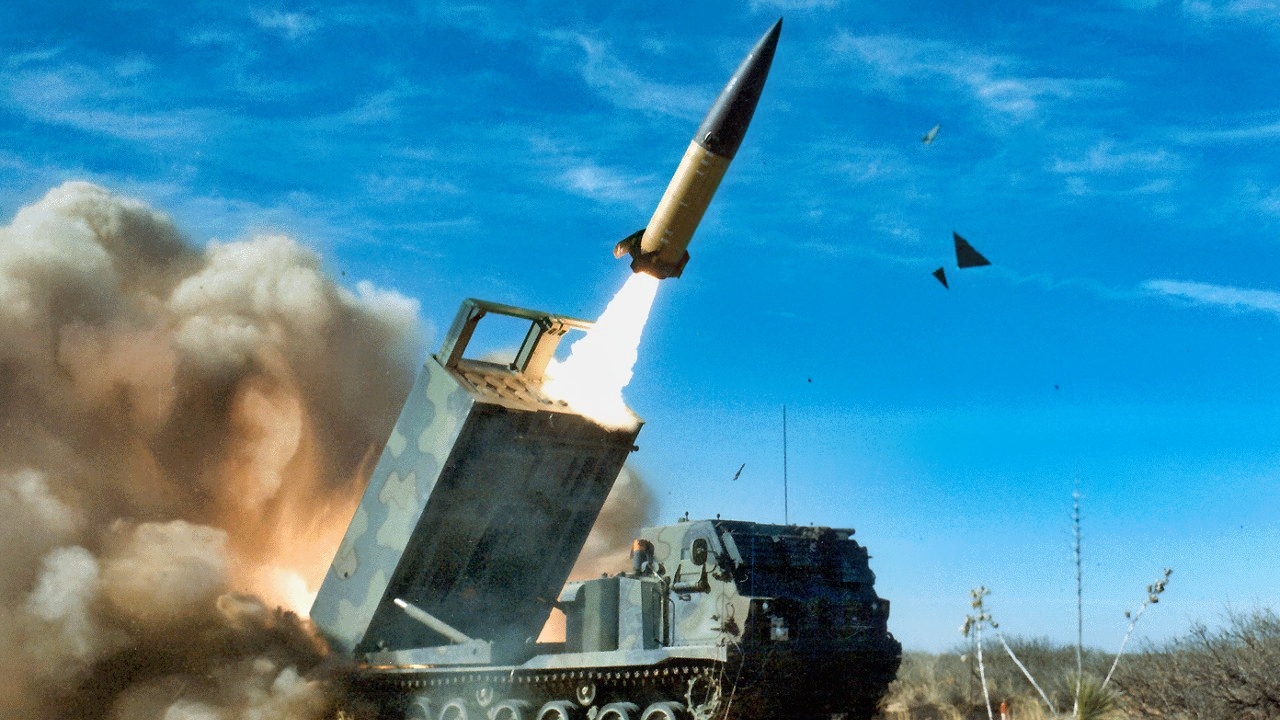
An ATACMS missile being launched from an M270 MLRS.
Specifically, the Tomahawk Land Attack Missile (TLAM) version of the weapon is one of the most precise and versatile long-range strike systems produced by the US defense industry. It can be launched from a variety of land-based, sea-based, submarine, and airborne platforms.

Tomahawk Launch. Image Credit: Creative Commons.
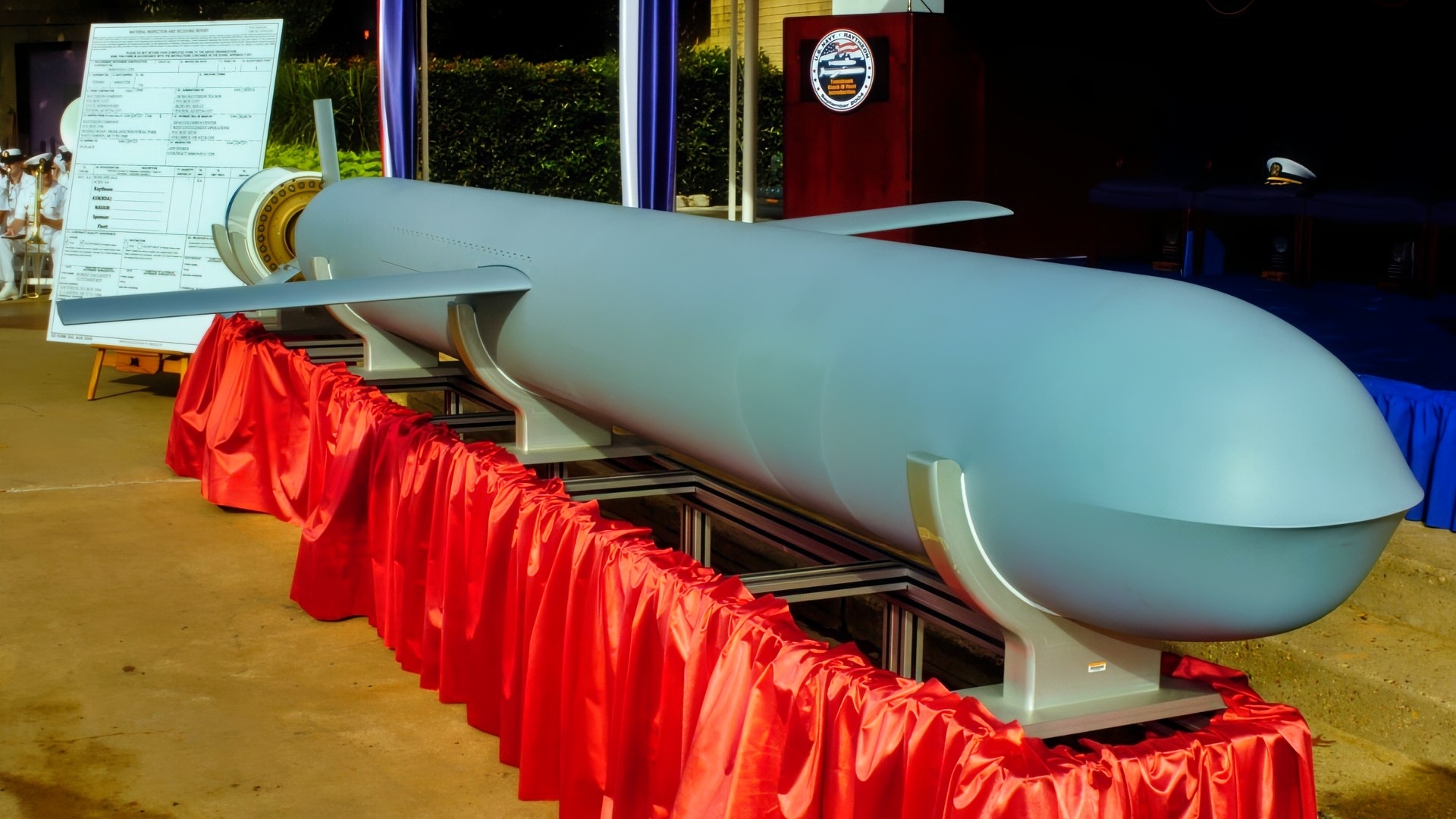
Tomahawk Block IV Missile. Image Credit: Creative Commons.
If the weapon were offered to Ukraine, it would be launched from ground-based mobile or fixed vertical launch systems that have been modified for the Tomahawk’s performance. For use in Ukraine, US and NATO planners are expected to adapt either the existing Mk 41 Vertical Launch System (VLS) or deploy land-based mobile platforms that can be integrated with US-controlled fire coordination software.
An existing option is the now-abandoned US Army Mid-Range Capability (MRC), which is part of the Typhon missile system. This system uses modified naval launch cells to fire Tomahawks from land.
The MRC Launcher can fire the Standard Missile 6 (SM-6) as well as the Tomahawk Land Attack Missile (TLAM). The complete configuration of an MRC battery comprises a battery operations center, four launchers, prime movers, and modified trailers.
The Tomahawk’s range exceeds 1,600 kilometers for the shorter-range version and up to 2,500 kilometers for the longer-range version. It will permit Ukraine to conduct deep-penetration attacks on high-value targets while flying at low altitudes that evade radar detection.
Not surprisingly, the former KGB Lt. Col., who is now Russia’s President, has been hyperventilating in his efforts to stop Washington from sending the Tomahawks to Ukraine. He has warned that such a move would destroy what he regards as “steadily improving” Moscow-Washington relations.
This warning is a judgment by Putin that the White House may no longer agree with. The administration of US President Donald Trump has grown increasingly impatient as the once-mediocre KGB officer has attempted to outmaneuver or to prevaricate over any efforts by Washington to formulate an end to the war in Ukraine.
Trump has voiced his dislike of what he sees as Putin’s duplicity, stating on more than one occasion that he holds phone calls with the Russian President in which he “talks nice” but then soon afterward “he bombs everybody.” Trump has gone so far recently as to mock Russia’s increasingly failing military might as a “paper tiger.”
Negotiations and other diplomatic initiatives having all failed thus far, it is time for “Peace Through Strength,” opined the Washington, DC-based Atlantic Council this Monday.
The Lay of the Land
During an October 6 interview, Trump confirmed the United States is ready to deliver Tomahawk cruise missiles to allied nations, including Ukraine.
They would be offered under a framework agreement that has the US retaining operational control over the missiles.
This is a landmark decision and represents a dramatic evolution—if not a turnaround—in the level and the lethality of Washington’s military support model. This concept involves expanding access for other nations to high-precision strike systems, while the US maintains command authority.
If the Tomahawks were actually provided to Ukraine, it could be transformative on the battlefield. Their strike capability would intensify the strategic pressure on Russian forces. This move could also reshape the security architecture of Europe, according to the Army Recognition news site on October 7.
Putin recognizes this all too well, which is why his opposition to the possibility of them being sent to Ukraine has been voiced by a senior Foreign Ministry official, rather than one of the usual disinformation specialists, such as Kremlin spokesman Dmitri Peskov.
Deputy Foreign Minister Sergei Ryabkov not only warned against Tomahawks being sent to Ukraine, but also declared that any momentum that had been generated toward resolving the conflict in Ukraine that came out of Trump’s August meeting with President Vladimir Putin in Alaska had been “largely exhausted.”
Instead, he and other Russian officials have lamented in the past few weeks that Trump has stopped expending efforts towards a peace settlement and is instead considering the sale of new weapons to Ukraine.
This latest warning against the Tomahawk sale came on Wednesday and was part of a Russian effort to once again keep deterring Trump from sending the missiles to Ukraine. This action is a repeat of a ruse Moscow has engaged in time and time again in the course of its war on Ukraine.
This time, it came in the form of Deputy Foreign Minister Sergei Rybakov warning of “the depth and severity of the consequences” that supplying Tomahawks to Ukraine would have, declaring that providing this level of advanced military technology to Ukraine would lead to a direct conflict between Russia and NATO countries.
Putin’s singular problem is that despite all the bluster from Moscow, this tactic is not likely to work this time.
A Target-Rich Environment for Tomahawks
According to the ISW map showing which parts of Russia could be targeted, almost 2,000 military and industrial sites across Russia could fall within range of the Tomahawks.
The map was developed based on the two variants of the missile.
The first range envelope on the map is for the shorter-range version of the missile that has a range of about 1,600 kilometers. The targets are within reach of the longer-range version, which can reach points on the map up to 2,500 kilometers from a launch point.
According to ISW’s calculations, this 1,600-kilometer standard model could reach at least 1,655 targets inside Russia, including 67 air bases. The longer-range version would put 1,945 facilities within range, including 76 military airfields.
Among the installations that will fall under the Tomahawk’s range, so to speak, are the giant drone manufacturing plant in Yelabuga, Tatarstan, and the Engels-2 air base in the Saratov region, which is home to a significant portion of Russia’s bomber fleet.
Aside from these well-known facilities, ISW researchers identify other potential targets, including command centers, weapons and fuel depots, arsenals, air defense systems, maintenance and repair facilities, defense production plants, and training ranges.
For Ukraine, this means the ability to strike Russian airbases, logistics hubs, and command posts far from the front line—targets previously considered out of reach even for Storm Shadow or ATACMS systems.
Other than the symbolic and psychological impact on the Russian military that the Tomahawk would have, this would be the most significant improvement in the Ukrainians’ strike capabilities since they received the US HIMARS system and the European Storm Shadow missiles.
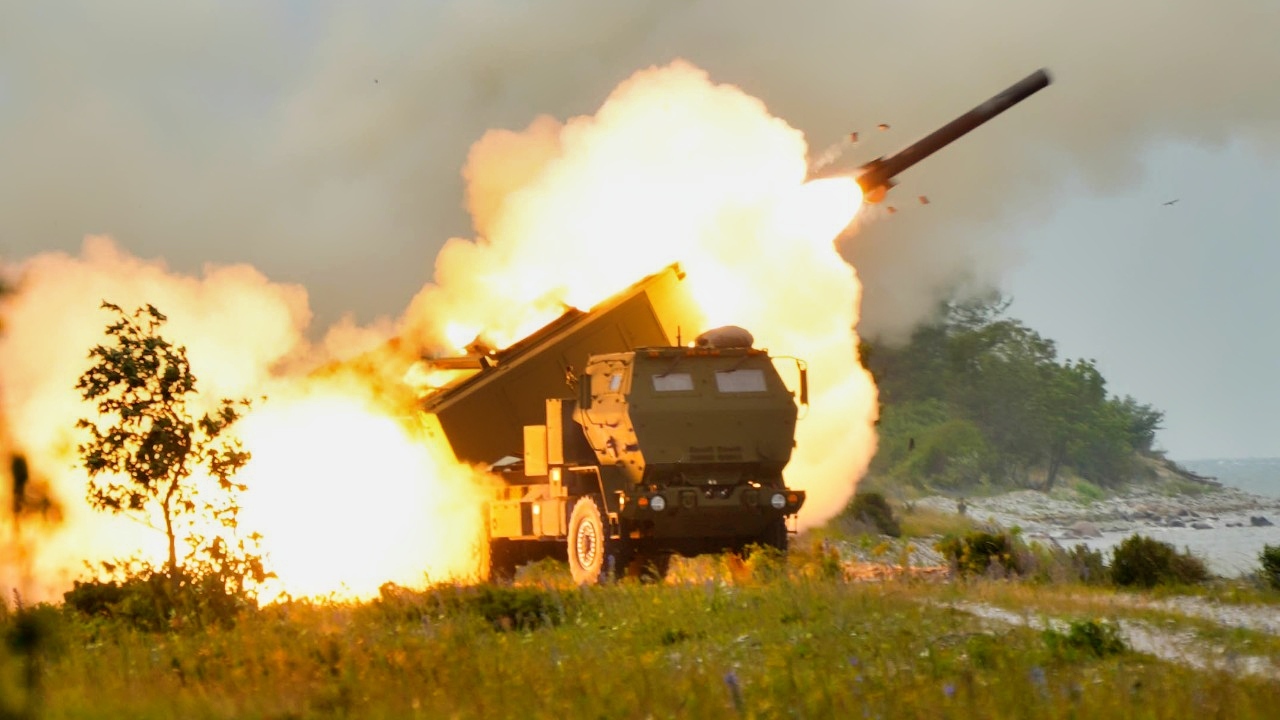
An Estonian Defense Forces M142 High Mobility Artillery Rocket System (HIMARS) fires a training rocket during a live-fire exercise in Undva, Estonia, July 11, 2025. U.S. Army elements from Bravo Battery, 1st Battalion, 14th Field Artillery Regiment, 75th Field Artillery Brigade, supporting Task Force Voit, assisted in the training process. The task force was originally formed in 2023 to support the Estonian Defense Forces in the creation of a HIMARS unit. Task Force Voit works closely with the Estonian Armed Forces, sharing critical defense strategies, training, and military readiness support. The presence of U.S. troops in the region serves as a cornerstone of NATO’s commitment to security in the Baltic region. The task force provides combat-credible forces to V Corps, America’s only forward-deployed corps in Europe. (U.S. Army photo by Staff Sgt. Rose Di Trolio)
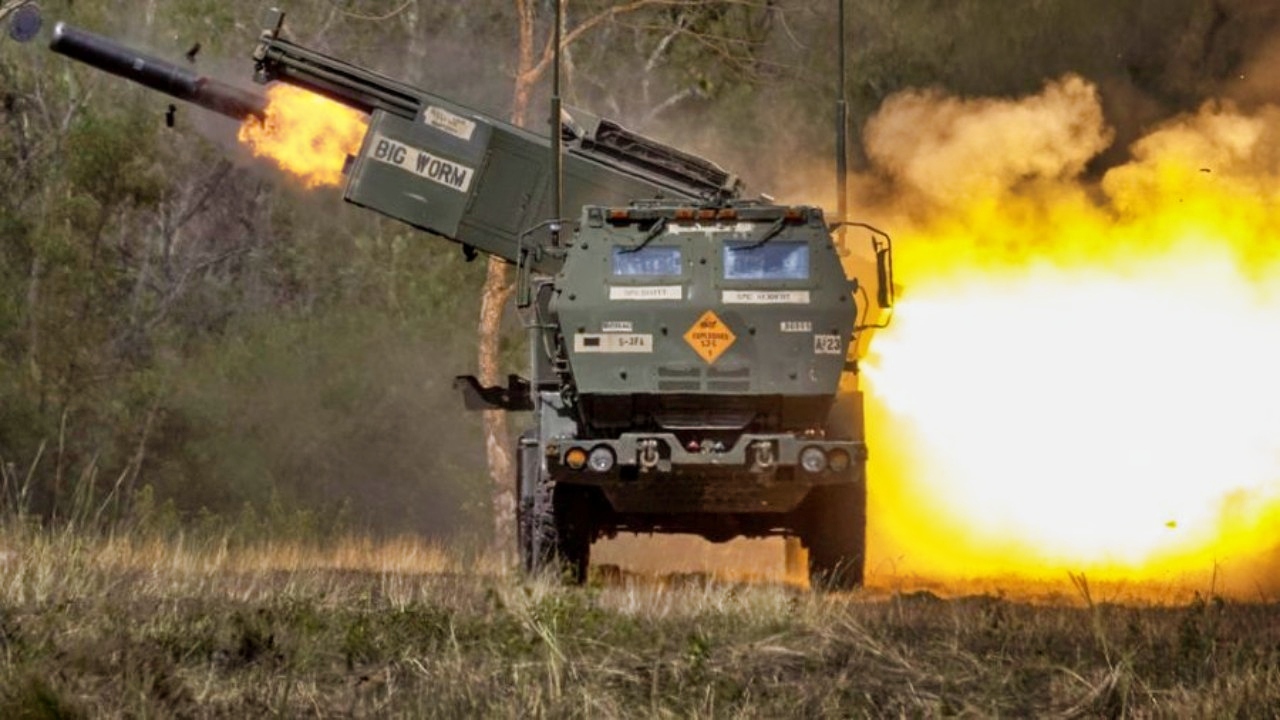
HIMARS. Image Credit: U.S. Government.
Russia will now have to live in a world where there is literally “nowhere to hide” on the battlefield. Distance from the Ukrainian front no longer guarantees security. This will force the Russian army into tactical retreats, dispersed deployments, and costly relocations of critical military infrastructure and weapons systems.
Discussions around supplying the Tomahawk missile have moved from the category of “speculative” to “highly likely” after October 7 media reports implied that President Trump had “largely made up his mind” about providing them to Kyiv.
But the American president did add that he first wanted some clarification on how Ukraine would use them and on what kinds of targets.
Trump also emphasized that he is not seeking an escalation of the conflict and wants to understand the strategic purpose behind the Ukrainian request.
About the Author: Reuben F. Johnson
Reuben F. Johnson has thirty-six years of experience analyzing and reporting on foreign weapons systems, defense technologies, and international arms export policy. Johnson is the Director of Research at the Casimir Pulaski Foundation. He is also a survivor of the Russian invasion of Ukraine in February 2022. He worked for years in the American defense industry as a foreign technology analyst and later as a consultant for the U.S. Department of Defense, the Departments of the Navy and Air Force, and the governments of the United Kingdom and Australia. In 2022-2023, he won two awards in a row for his defense reporting. He holds a bachelor’s degree from DePauw University and a master’s degree from Miami University in Ohio, specializing in Soviet and Russian studies. He lives in Warsaw.
More Military
Merkava: The Best Tank on Earth (Not Made in USA)
The U.S. Air Force’s Big B-21 Raider Stealth Bomber Mistake Still Stings
The U.S. Navy’s Big Ford-Class Aircraft Carrier Mistake Still Stings
Russia’s Admiral Kuznetsov Aircraft Carrier Can’t Stop Pumping Out Toxic Black Smoke
India’s Big Blunder Purchase of Russia’s ‘Mothball’ Aircraft Carrier Still Stings


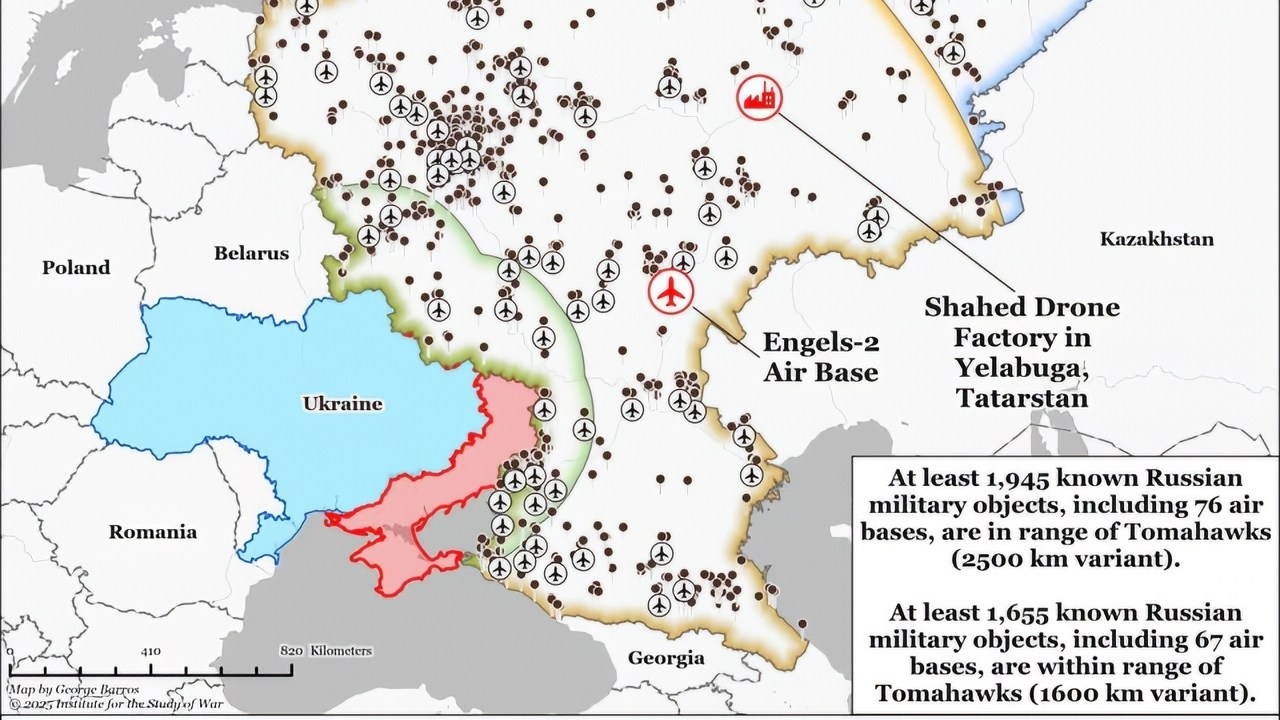








Jim
October 10, 2025 at 3:07 pm
Nice map. Gaudy with all those hits over time.
Yes, Ukraine has been attacking into Russia for a long time now, wasn’t it quaint back when Biden was reticent about attacking deep into Russia.
How long ago was that? Now do you know why this war is existential for Russia?
There is a mirror to all this: Russia has been pounding the snot out of Ukraine in a sustained bombing campaign that rivals allied bombing raids during World War Two.
And, all evidence suggests they can continue this indefinitely.
And, evidence suggests there is more of an urgency on the part of the Russians at the front, as sluggish as many analysts have complained about or bragged about…
… that’s attrition warfare for you.
The Tomahawk is late 1970’s technology limited to 570 m.p.h. Great when it came out, top of the line, still is quite serviceable today.
It’s dangerous because its warhead can be nuclear, that’s what it’s original purpose was, strategic delivery. The Russians can’t tell as it’s coming in.
And, it could deliver conventional warheads directly on the Kremlin. But, as fast as it is, and it does have maneuverability as a ground hugging munition if so programmed, Russia possesses S-300 and S-400 surface to air systems which can lock on and Russia would send up fighter aircraft to lock on and take out the Tomahawk.
(The Tomahawk has to have American programming, technical downloading top security codes, in flight control, and last second navigation changes. American through and through… no fig leaf on that one…)
Still, some could and probably would get through…
Is that where Trump want to go?
Escalation of a potential magnitude to goad Russia into crossing a red line, striking source command & control… and supply.
Is that what Trump wants to precipitate?
He’d be a fool.
But he’s got a lot of bad advisors around him.
So, you never know.
Out of that dangerous brew you can get a full on Russia NATO war… no more fig leaf.
Really? Think about it.
BigShitDoyle
October 10, 2025 at 7:39 pm
Man, the long-range tomahawks are just exactly what the war-ethusiastic doc ordered to start nuclear ww3 in europe.
Nuclear ww3 in europe is just around the corner !
That’s What NEEDED now to clean up the fascist dross there.